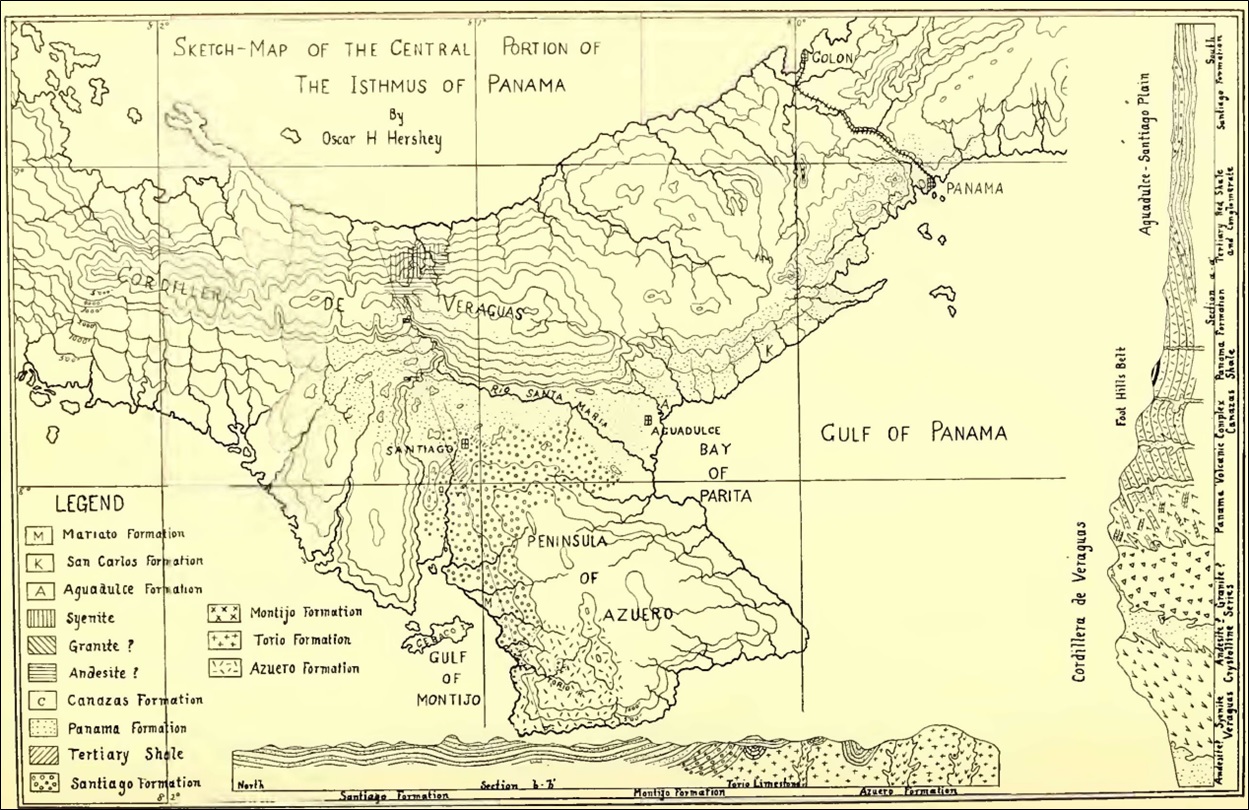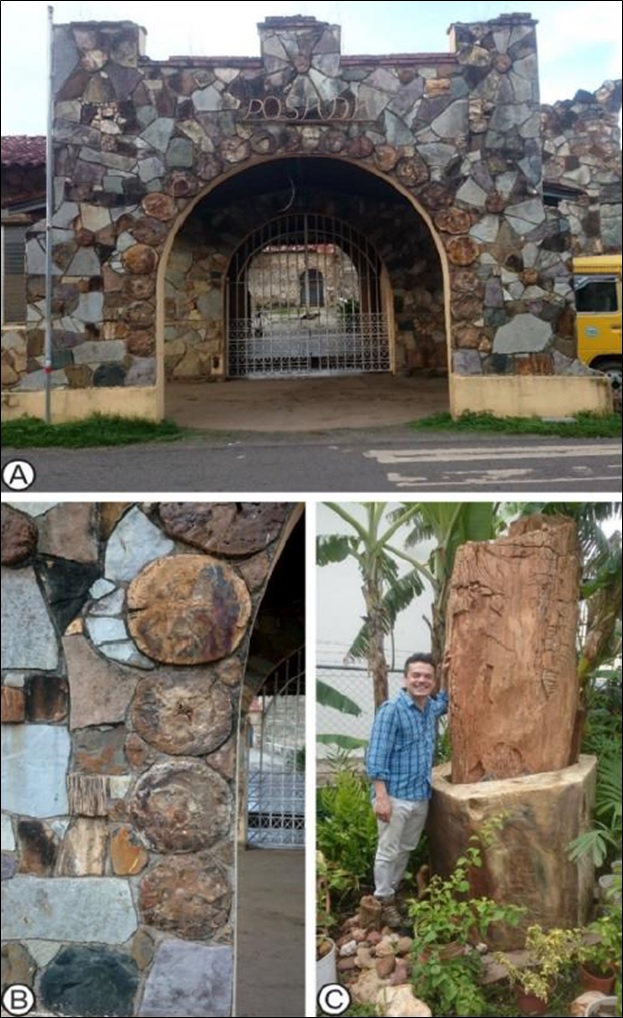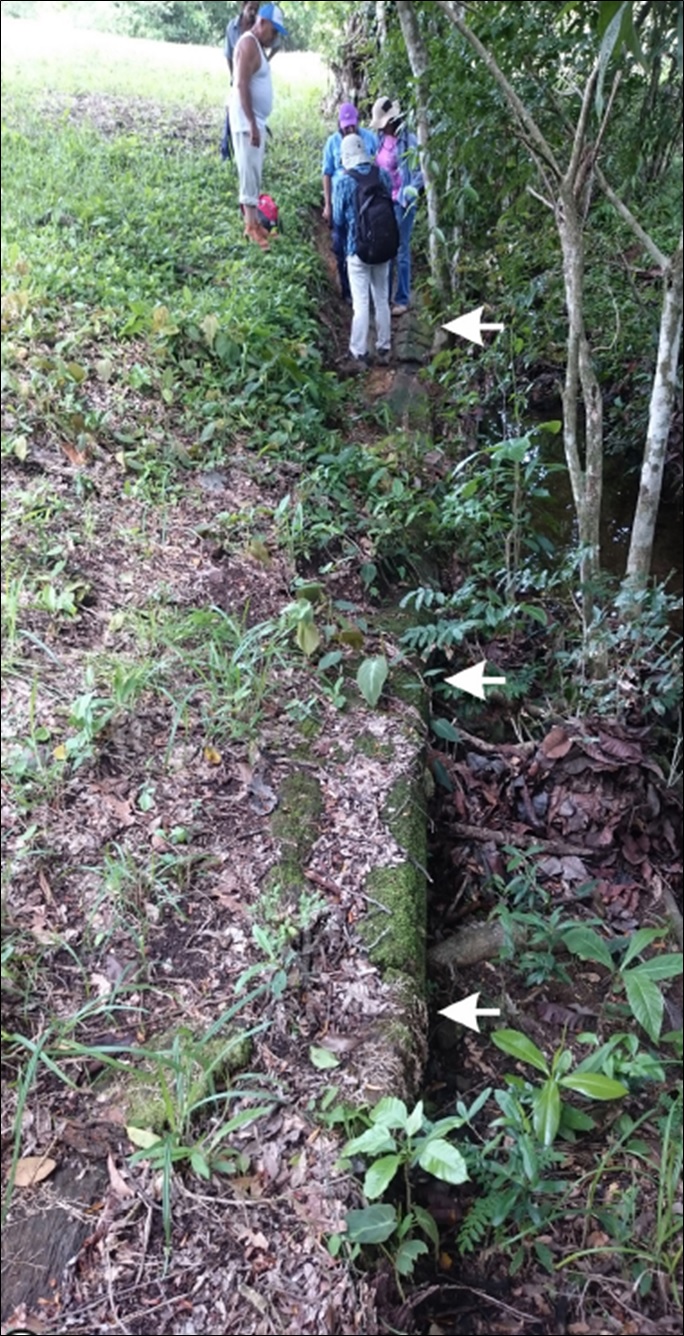Santiago Fm
Type Locality and Naming
Type Locality is At Santiago and adjoining areas, Veraguas Province (Keroher et al. (1966)
[Figure 1. The earliest known geological sketch map of the Central Portion of the Isthmus of Panama zoomimg in on the Azuero Peninsula. The map displays the formations known at that time and described by Hershey (1901).]
Synonym: Sometimes referred to as the “Macaracas Fm” (Kolarsky et al. (1995a, 1995b); Buchs et al. (2011); Rodríguez-Reyes et al. (2020b)).
Lithology and Thickness
Relationships and Distribution
Lower contact
Upper contact
Regional extent
GeoJSON
Fossils
[Figure 2. A) Facade of "La Posada" in the town of Ocú, showing the abundance and quality of the fossil woods in the area. B) Close-up of some woods on the façade. C) Fossil wood used as ornaments in a home garden in Chitré. Rodríguez-Reyes (2019).]
[Figure 3. The large Anacardiaceae tree in its original position in the Santiago Fm. The preserved trunk is ~20m in length and 2.5m wide. The dimensions suggest a probable height of ~35m. Rodríguez-Reyes (2020a). (Material reproduced with the permission of the editor).]
Age
Depositional setting
Additional Information
References:
- Named by Hershey (1901)
- Murata (1940);
- Olsson (1942b). Beds of sandstones and shales. Chart shows Santiago above Tonosí limestones. Upper Oligocene. Ampullinopsis cf. spenceri and Turritella meroensis have been found in strata that represent the Santiago Fm or its equivalent.
- Terry (1956); Woodring (1957, 1959);
- Woodring (1960). A poorly defined name for shale and other strata at Santiago, Veraguas Province, and in adjoining areas. A Late Cretaceous age was initially suggested. Later the name was used for marine Oligocene deposits at Santiago and in adjoining regions. More complete definition is desirable.
- Stern and Eyde (1963); Keroher et al. (1966); Woodring (1982); Ministerio de Comercio e Industrias (1991); Kolarsky et al. (1995a, 1995b); Instituto Geografico Nacional (IGN) "Tommy Guardia" (1996); Krawinkel et al. (1999); Buchs et al. (2010 & 2011); Jud et al. (2017a); Rodríguez-Reyes et al. (2020a, 2020b).


